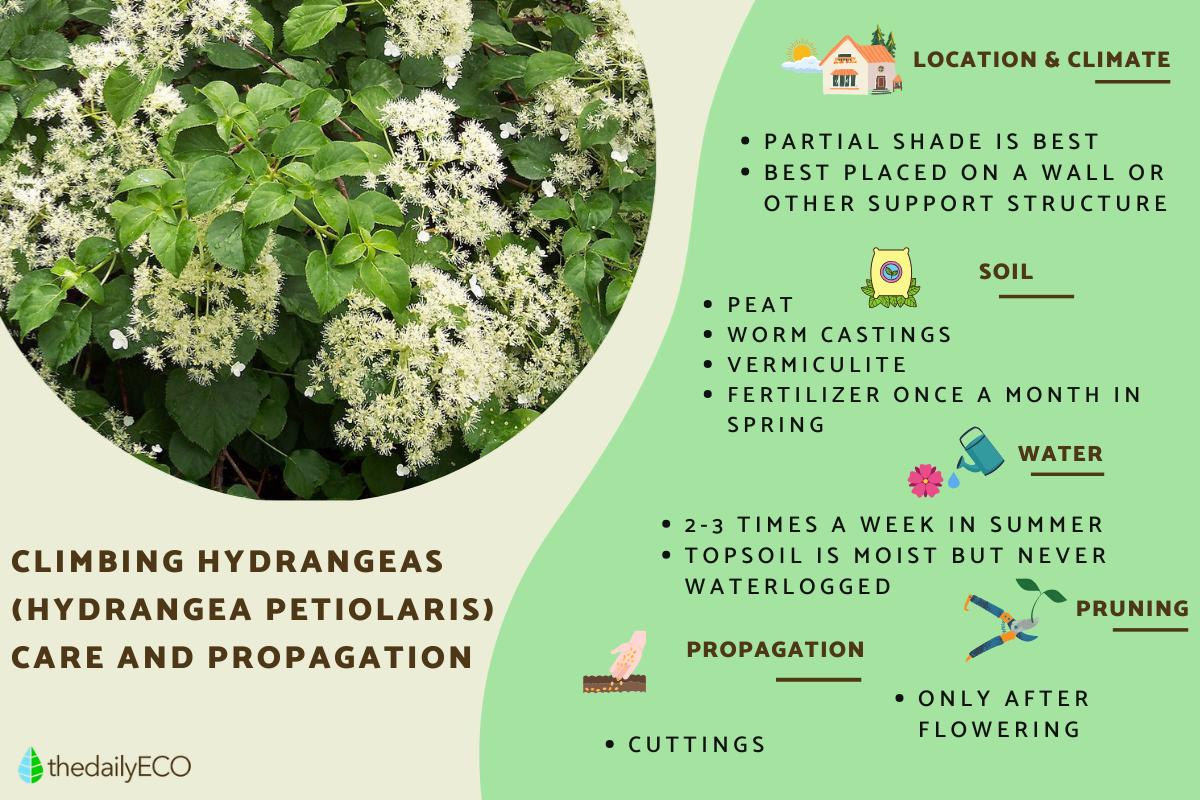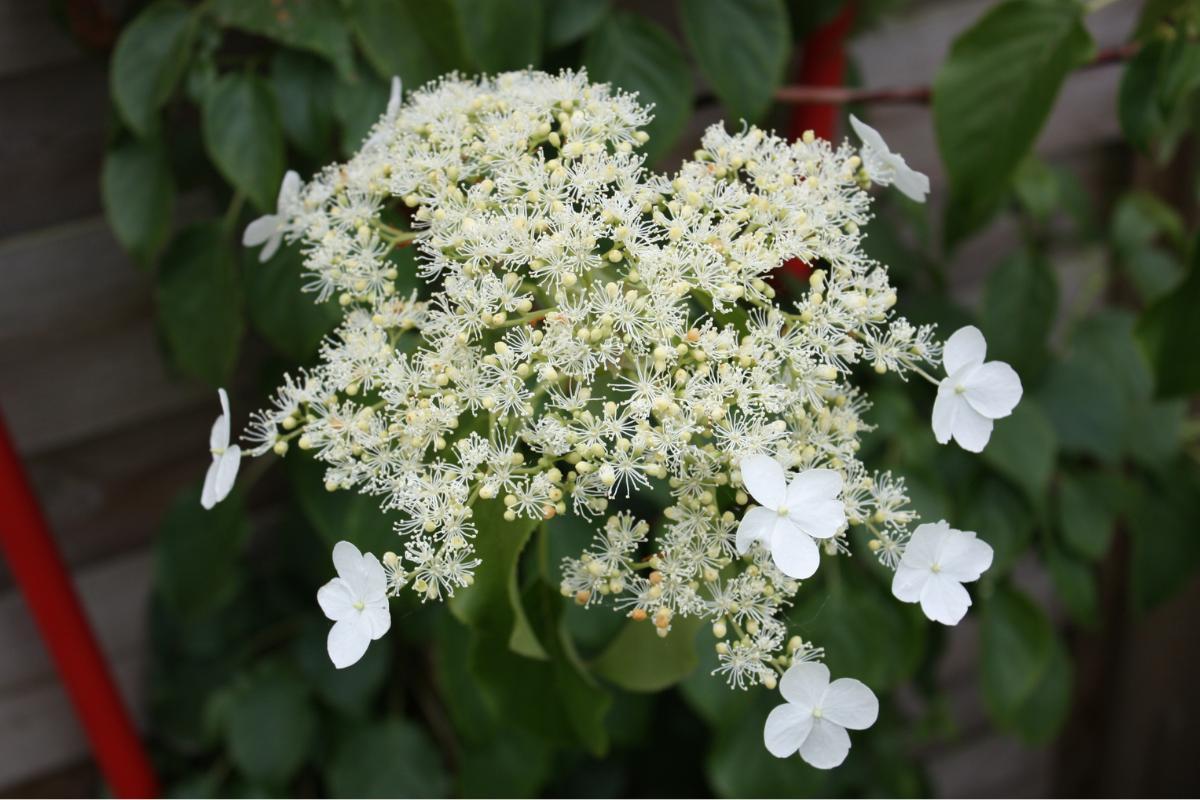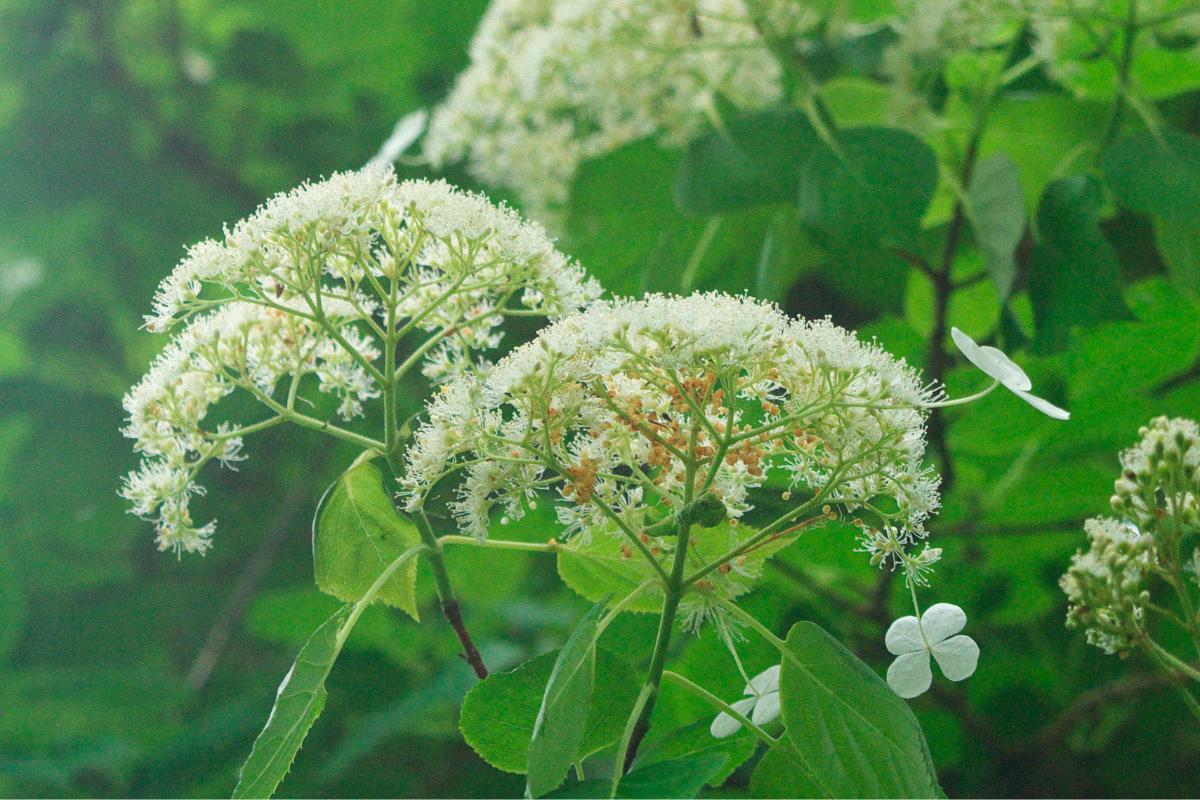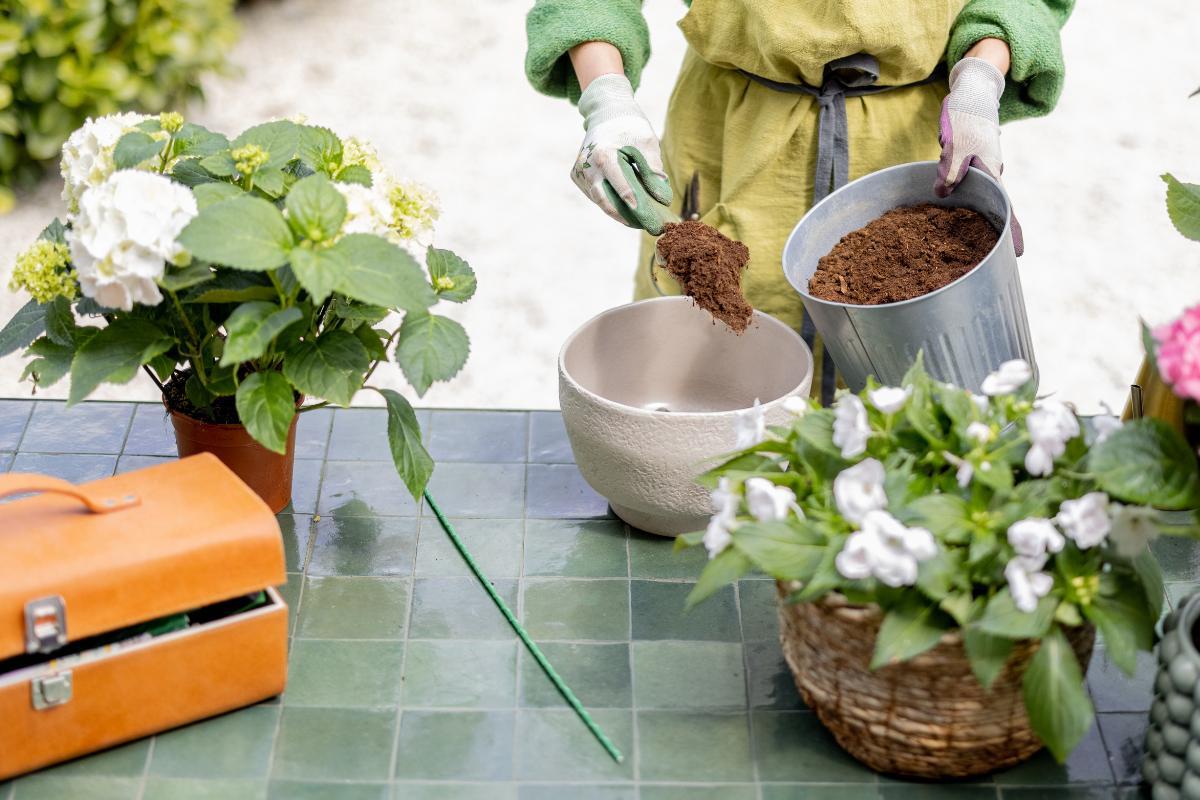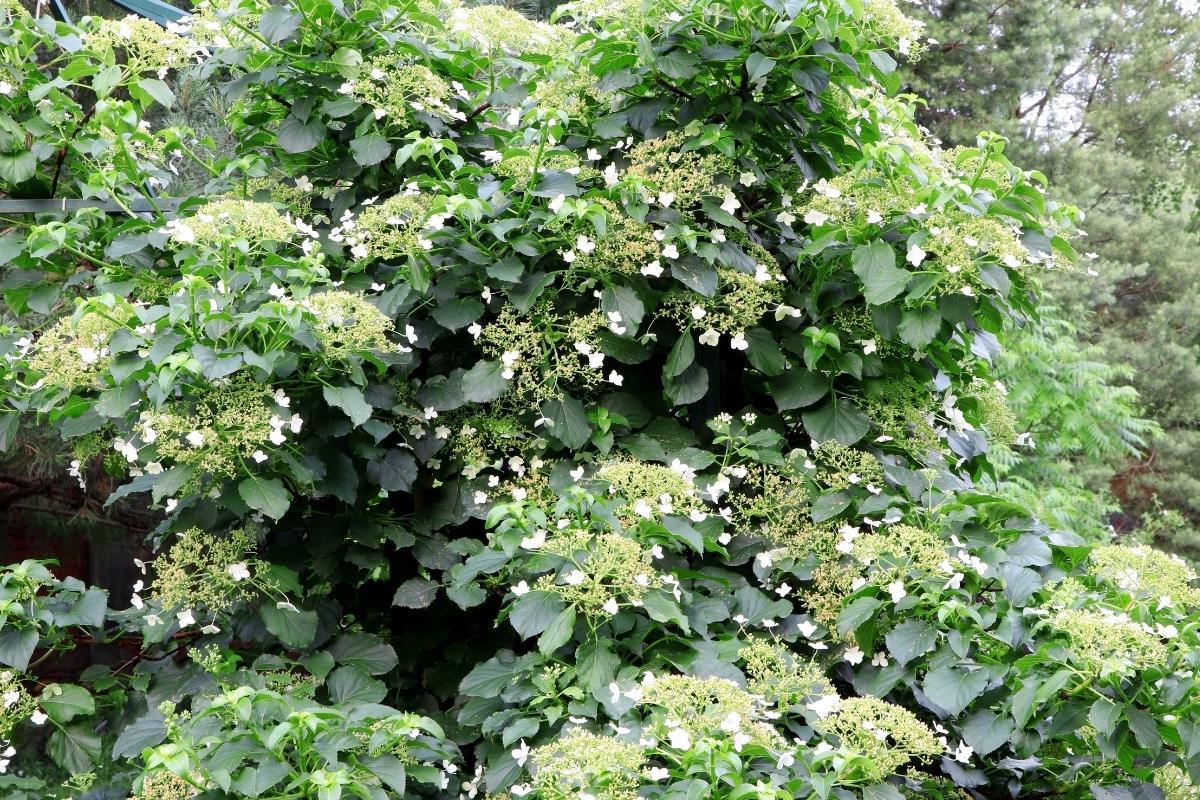Climbing Hydrangeas Care Guide


Many of the plant care guides we provide at thedailyECO are for potted plants or those we place in a flowerbed. Climbing hydrangeas are special because they need to be planted in a way which allows them room to bloom. These beautiful flowering plants have an inflorescence of several four-petaled flowers which present in pastel shades. Fascinatingly, these colors can change according to the pH of the soil. Regardless of color, they need the create care in terms of watering, placement, light exposure, substrate and other environmental factors. Take a look at our climbing hydrangeas care guide to learn about planting, propagating and problems it can experience.
Characteristics of climbing hydrangeas
To better know how to take care of this plant, we should look in more detail at its specific characteristics:
- Its scientific name is Hydrangea petiolaris and it is characterized by being a woody vine plant, something which provides its ‘climbing’ ability.
- They can be very tall, ranging from 9 to 15 metres in total. They are deceptively long since they curl around themselves with the help of aerial roots.
- Growth is slow for the first two to five years, but then progresses rapidly. This is when the most striking presentation of the plant appears.
- If you are looking for climbing vines with flowers, this is an incredible choice. It is grown for the value of its flowers, which are produced in spring and bloom in large clusters. This only occurs when the plant is already mature. The flowers are of two types, both fertile and infertile. Some are like small stamens. Others are the typical four-petaled ones and it is these which are not fertile. The colors of the climbing hydrangea range from creamy yellow to white.
- It is a deciduous plant and loses its leaves in winter. During this time, it remains bare with only the stems. The rest of the seasons, the leaves are heart-shaped. They are green in spring and summer. They turn yellow in fall, giving a valuable range of colors that changes with the year. It grows abundantly in the form of a dense bush.
Discover 10 different types of hydrangeas in our related guide.

Light and location for climbing hydrangeas
Where you plant your climbing hydrangeas is of the utmost importance. Much of this is due to the amount of light they receive, but there are also other factors to consider:
- Partial shade: climbing hydrangeas must receive a couple of hours of sunlight a day, especially in spring. This is so that it can produce its spectacular flowers. However, it needs to avoid long exposure to direct sunlight.
- Summer: in places where the summer is very dry and hot, it should ideally be kept in an area where the afternoon sun does not hit it directly.
- Climbing: due to its vine nature, it is used as a cover on buildings, tall houses or at the foot of dry trees. It is not recommended to place it on wooden structures because the aerial roots can damage the wood. If the place where the plant is supported is high enough, it will grow just as tall because they respond to the structure that supports them.
- Container: you should ideally plant it in direct soil. If you don't have the space available, you can have the climbing hydrangea in a pot. Make sure you get the largest one you can to facilitate its growth. It should have drainage holes at the base.
If you want to search out similar plants to the climbing hydrangea, take a look at our guide to perennial flowering vines.

Substrate and fertilizer for climbing hydrangeas
Hydrangeas are not very demanding or sensitive when it comes to the soil in which you plant them. However, it is important that it is non-calcareous. To do this, prepare a homemade substrate mix combining equal parts of peat and worm castings. These provide organic matter, reduce the lime in the soil and ensure nutrient content. Place a sixth of vermiculite to help drain excess water and retain a certain amount to release when necessary.
Due to the slow growth in the first few years, you might think that it urgently requires high doses of fertilizer. What it really needs is time to settle. Do not over-fertilize, since you can burn the entire plant with an excessive amount. You can fertilize with balanced liquid fertilizer during the spring, but no more than once a month.
Our DIY tutorial explains how you can make your own worm castings at home.

Watering climbing hydrangeas
This vine is tolerant of some drought, but it is best to give climbing hydrangeas the necessary amount of water so that it produces abundant flowers and foliage. The soil should be slightly moist, so you should water it 2 to 3 times a week. This will depend on the season and how quickly the water evaporates. We can reduce watering in winter. As a rile of thumb, the soil should always be damp, but never waterlogged.
Pruning climbing hydrangeas
Pruning climbing hydrangeas is tricky, so we recommend taking your time. Branches that stick out and seem to be taking away from the shape are the ones that will weigh down the flower heads, so don't prune them.
The correct time to prune climbing hydrangeas is after it has produced flowers. This will allow you to re-train the plant within the boundaries you prefer. The leaves cause skin irritation, so be sure to wear gloves and long sleeves when handling them.
For more help pruning climbing hydrangeas, we provide a guide to the different types of pruning.
Propagation of climbing hydrangeas
Climbing hydrangeas are propagated by cuttings more easily than by seeds. These are the steps:
- Choose a hydrangea that is healthy and has leaves.
- Cut 10 centimeters from the stem.
- Cut the leaves from the base.
- Bury the cutting in worm castings.
- Water abundantly for two weeks, until the root emerges.
- Transplant to its final location with properly prepared substrate.
Propagating different plants can be tricky and not all the same plants will grow in the same way. To learn more background about this process, you can take a look at our article asking can aloe vera leaves regrow after being cut?

Climbing hydrangeas problems
As with all other plants, there are diseases, pests and other problems which can affect growth and blooming. Most of the diseases from which climbing hydrangeas most suffer are caused by fungi as a result of overwatering. Some fungi that it can contract are those of the genus Armillaria which rots the bark, Botrytis gray fungus that forms gray threads on the plant or other fungal spots on the leaves.
Climbing hydrangeas are also known to contract pests such as aphids and weevils that suck the sap, weakening the plant as they do so. Since these are types of patrial-shade plants, it it also important to not burn them in direct sunlight. This is one of the reasons you may see the leaves turning yellow or drying out.
Take a look at our related guide on why a plant has black leaves to learn more about protecting your plants at home.

If you want to read similar articles to Climbing Hydrangeas Care Guide, we recommend you visit our Plant care and cultivation category.
- Kellum, J. (2008). Southern Shade: A Plant Selection Guide. United States: University Press of Mississippi.





